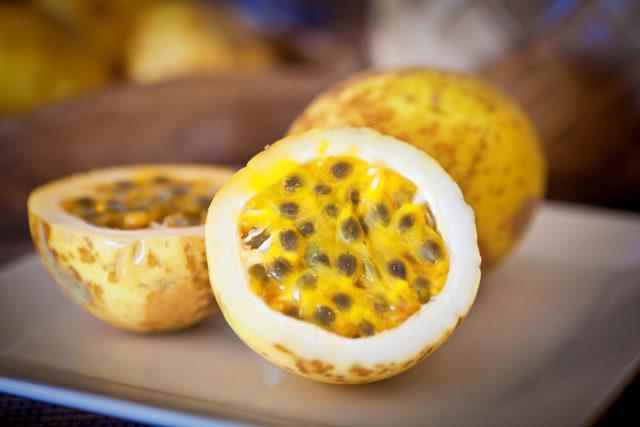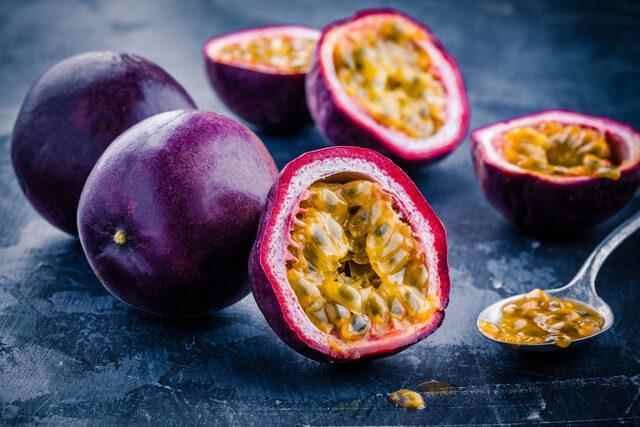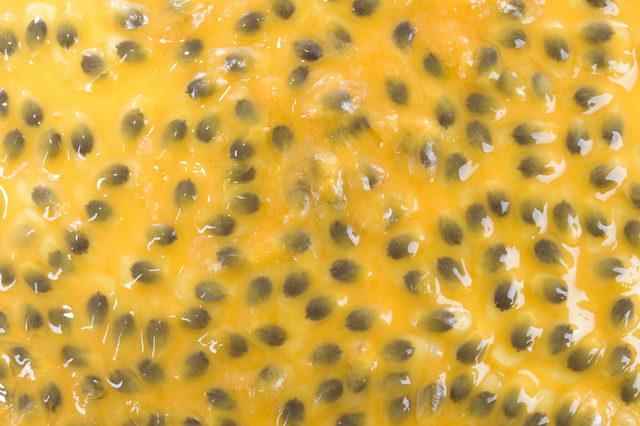Passion fruit is the fruit of the passiflora plant and is a tropical fruit rich in vitamins and minerals. Passion fruit is a hard and rind outside, juicy and seed-filled fruit. The amount of water is high, so it should be consumed immediately. In addition, this fruit, which is not resistant to cold, can withstand up to -1 degrees at most. Therefore, passiflora species usually grow in Brazil and tropical regions, with some species rarely found in Asia, Australia and South Africa.
If we look at our country, although it is not grown professionally for consumption yet, it has just started to become widespread, and it is grown together with similar species as an ornamental plant in some gardens. Expert Dietitian Zehra Bora Kara gave information about the subject.
WHAT ARE THE BENEFITS OF PASSION FRUIT?
The peel of this fruit is generally used as a sedative, pain reliever, anti-inflammatory and in the treatment of skin wounds, especially open wounds in studies on rats. In addition to these properties, Passiflora Incarnata leaves are anti-inflammatory, positively effective in the treatment of urinary bladder wounds by increasing fibroplastic reproduction, and is an agent that provides collagen formation and new tissue formation in capillaries.

The peel of the fruit is 60%, and it contains amino acids containing pectin, tryptophan and sulfur. This fruit is known as a relaxing, calming and sexual desire enhancer. In addition to its effects such as accelerating protein metabolism and glucose absorption in the intestine, the most important effect is that it heals stomach wounds. Studies have shown that due to the amount of potassium in its structure, it lowers blood pressure, stabilizes blood pressure, reduces muscle pain, slows down the development of cancer cells and accelerates enzyme activities for the destruction of these cells.

WHAT’S IN PASSION FRUIT?
There is approximately 10.4 g fiber in 100 grams, this value meets approximately 27% of the daily fiber requirement. The fact that it is rich in fibrous structures such as cellulose and hemicellulose underlines that it can be used in controlling postprandial blood sugar and in type 2 diabetes. In this case, individuals with diabetes can include it from time to time to increase diversity in their diets.

In addition, in a study, it was reported that the pectic substances in the structure of passiflora fruit provide a decrease in body weight by creating a satiety effect with its water retention and gelling properties by prolonging the food transit time from the intestines in overweight people. In addition, this gelling reduces total cholesterol and triglycerides.
- It is rich in vitamin C, B complex vitamins, calcium, phosphorus and protein.
- Because it contains passiflorin, it is a natural sedative and relieves stress, anxiety, insomnia and depression.
- It helps to increase serotonin (the happiness hormone).
- It creates a rich source of antioxidants, vitamin C, beta-carotene and polyphenols and strengthens immunity.
- A good source of fiber therefore helps maintain your gut health and prevent constipation.
- It helps to lower cholesterol and triglyceride levels.
- It is good for urinary tract diseases.
- It has pain relieving properties.
- It is beneficial against the problems experienced during menopause.
- It has a sexual enhancement feature.
- It benefits blood circulation.
- It protects eye health.
ATTENTION BEFORE CONSUMING PASSION FRUIT
The peel part of the passion fruit is not suitable for consumption, therefore its consumption is not recommended. It is recommended to chew the seeds thoroughly.
We should prefer the purple and wrinkled skin of passion fruit, divide it in half and consume the seeds directly with the help of a spoon. If we do not want to consume only the fruit itself, we can make fruit juice/cocktail, or we can produce fresh alternatives such as dessert and ice cream with the help of milk or yogurt. We can create new flavors by adding 1 tablespoon to a smoothie mix containing oats, chia seeds, and nuts, and we can consume it as a side dish alongside meals in order to give it a pleasant smell and taste.
